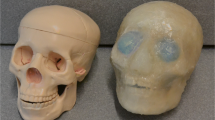Abstract
Simultaneous positron emission tomography (PET) and magnetic resonance imaging (MRI) can provide a strong magnetic field to improve the PET spatial resolution by restricting the positron range. In this study, an experimental system and a Geant4 model were built to investigate the difference in improved spatial resolution by using a magnetic field for PET in different human tissues. Experiment results indicated that the magnetic field enabled a greater compressive effect on the positron distribution in a low-density medium. From the simulation results, the magnetic compression was only effective in the direction perpendicular to the magnetic field. Additionally, the saturated relative change rates of the mean positron range were reached for all tissues with increasing magnetic field, and the saturated values exhibited an overall negative correlation with the tissue density. However, despite the considerable difference in the absolute range in different tissues, the saturated values were only in a very narrow range of approximately 45% to 50%, compared to the final relative change rates. It was revealed that the magnetic field can be a more effective method for improving the PET imaging quality for low-density tissues, and there should be an upper threshold for improving the PET spatial resolution using a magnetic field. A range-corrected algorithm associated with tissue density for PET–MRI systems can probably be developed based on the results.








Similar content being viewed by others
References
B.J. Lee et al., IEEE Trans. Med. Imaging 37, 2060 (2018)
R. Boellaard et al., Med. Phys. 42, 5961 (2015)
S. Vandenberghe et al., Phys. Med. Biol. 60, R115 (2015)
W.W. Moses et al., J. Nucl. Mater. 34, 101P (2015)
M. Larobina et al., Curr. Med. Imaging Rev. 2, 187 (2006)
D.L. Freese, et al., in IEEE Nuclear Science Symposium and Medical Imaging Conference, 2014. https://doi.org/10.1109/nssmic.2014.7430992
H. Zaidi et al., Med. Phys. 38, 5667 (2011)
J. Dryzek et al., Appl. Phys. A 81, 1099 (2005)
J. Cal-González et al., Phys. Med. Biol. 58, 5127 (2013)
G. Soultanidis et al., J. Phys: Conf. Ser. 3171, 012021 (2018)
C. Li et al., Eur. Phys. J. Plus 132, 484 (2017)
C.L. Loirec et al., Nucl. Instrum. Methods A 582, 644 (2007)
C.L. Loirec et al., Nucl. Instrum. Methods A 582, 654 (2007)
C.L. Loirec et al., Nucl. Instrum. Methods A 582, 665 (2007)
J. Allison et al., IEEE Trans. Nucl. Sci. 53, 270 (2006)
J. Baróa et al., Nucl. Instrum. Methods B 100, 31 (1995)
I. Al-Qaradawi et al., J. Phys. B: At. Mol. Opt. Phys. 33, 2725 (2000)
N. Guessoum et al., Appl. Surf. Sci. 252, 3352 (2006)
J. Dryzek et al., Mater. Sci. Forum 666, 10 (2011)
M.A. Bernal et al., Phys. Med. 31, 861 (2015)
K. Siemeka et al., Acta Phys. Pol., A 125, 833 (2014)
W. Lehnert et al., Phys. Med. Biol. 57, 4075 (2012)
G. Santin et al., in Nuclear Science Symposium Conference Record, vol. 2 (2002). https://doi.org/10.1109/nssmic.2002.1239563
A. Eleftheriou et al., EJNMMI Phys. 1, A50 (2014)
R. Kraus et al., IEEE Trans. Nucl. Sci. 59, 1900 (2012)
D.F.C. Hsu et al., IEEE Trans. Med. Imaging 37, 1058 (2018)
Acknowledgements
This work was supported by the National Natural Science Foundation (Grant Nos. 11575205, 11475197).
Author information
Authors and Affiliations
Corresponding author
Rights and permissions
About this article
Cite this article
Li, C., Cao, X., Liu, F. et al. Effect of tissue density on PET spatial resolution in magnetic environment. Eur. Phys. J. Plus 135, 118 (2020). https://doi.org/10.1140/epjp/s13360-020-00198-x
Received:
Accepted:
Published:
DOI: https://doi.org/10.1140/epjp/s13360-020-00198-x




